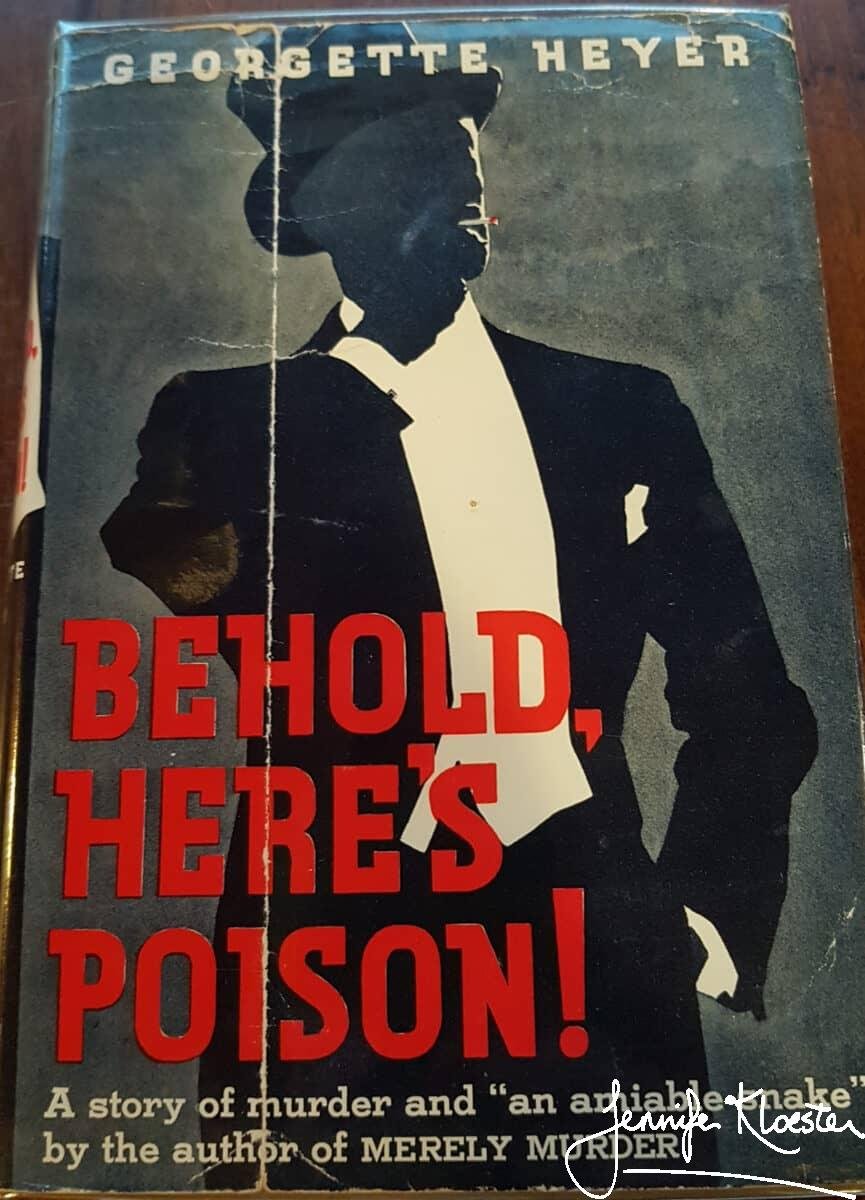
Georgette had enjoyed writing Death in the Stocks (1935), but it had been her last book for Longmans. She had signed a new contract with Hodder & Stoughton, the publishers famous for their “yellow jacket” books which featured many of the iconic writers of the day. She had every intention of starting the new detective novel as soon as she’d finished with Regency Buck but in June 1935 she wrote to her agent’s assistant, Norah Perriam, to say that the new book would be delayed as she had been ill and was struggling to recover:
‘Neither pen nor paper inspire me with anything but complete mental paralysis’
Georgette Heyer to Norah Perriam, letter, 21 June 1935.
At the end of June 1935 Georgette and her family left Sussex and headed north. Her illness had been some kind of “internal poisoning” and she had suffered a complete physical breakdown. She desperately needed a holiday, so they had booked two weeks at the Victoria Hotel in Bamburgh, Northumberland. It was a small village just behind the dunes of a glorious sandy beach and only a short walk from historic Bamburgh Castle. It was an idyllic destination and the Rougiers spent their days exploring the coves and inlets of the north-east coast, taking walks along the beach, shrimping, and paddling in the sea. Although she had “one or two definite ideas about the thriller” Georgette was content to let them bubble away in the background, and made no attempt to write while on holiday. Instead she thoroughly enjoyeda much-needed respite from the demands of producing two books a year.

Recovering from a breakdown
ALthough Georgette spent time with Richard during their fortnight in Bamburgh, he was an energetic three-year-old. To ensure they had a little peace and quiet, the Rougiers brought Richard’s nurse on holiday with them. After a fortnight together in Bamburgh, his parents left Richard in his nurse’s care at the Victoria Hotel and set off for a week in Scotland. This was Georgette’s first trip to Scotland and she loved every minute of it. It was as she said, “a heavenly week” for she’d never “dreamed of such beauty”. They visited St Andrews, where Ronald indulged in “An orgy of golf”, then drove on to Inverness, with a side trip to Loch Rannoch. From there they ran south along Loch Ness to Fort William, before driving on to Lochaber and the pretty port town of Mallaig. Georgette loved seeing Glenfinnan and recalling the stories her father had told her of Bonnie Prince Charlie raising the standard and looking “over the sea to Skye”. By the time they returned to Bamburgh via Berwick she was thoroughly rested and ready to return home and start writing again.
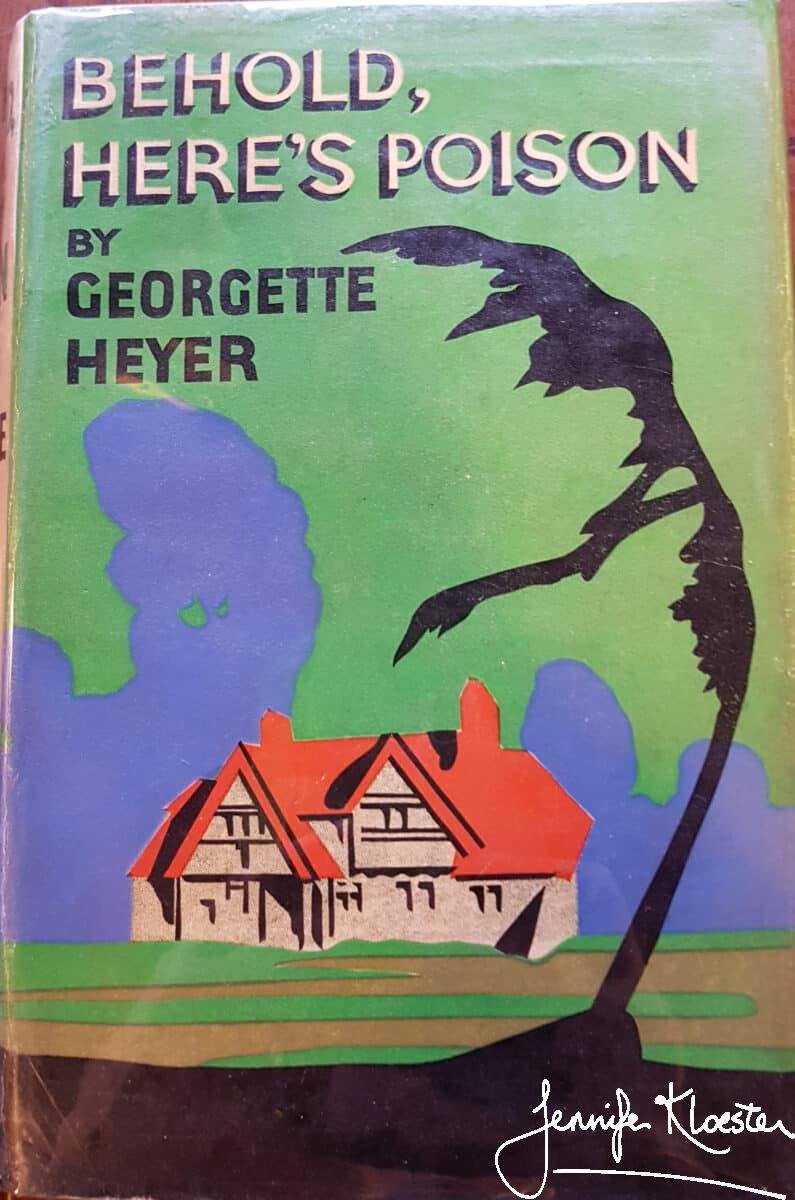
A Shakespearean title
By the end of August she’d made a start on the new detective novel, but when asked by her agent for a title and an outline, she had not yet set it in stone.
‘Rather a teaser. I do know more or less what the new book is about, but I haven’t given it a title, & the plot, being still fluid, is liable to change.
Georgette Heyer to L.P. Moore, letter, 29 August 1935.
It was at this point that Georgette laid down her pen and took up her Concordance to Shakespeare. After a few minutes perusal, she decided to call her new book either “Timeless End” from Romeo and Juliet, or “Behold, Here’s Poison” from Pericles. Her preference was for the latter and, having decided that two of her characters were to be poisoned, she opted for the quote from Pericles. End the end it was an extremely apt title, for the poison and the method of delivering it may be said to have been under everyone’s eye from the beginning. No spoilers, however, and Behold, Here’s Poison is as much a book about human nature as it is a clever mystery. Heyer obviously enjoyed writing the book, for she gave full rein to her penchant for humour in it by bringing together a cast of very human acharacters, none of whom have any difficulty speaking their minds or being rude either to each other or to the police.
Miss Heyer’s description of family life would win the approval of Mr. G. B. Shaw, so thoroughly does she agree with his thesis that it consists chiefly of a competition in rudeness.
E.R. Punshon, “The Omniscient Detective”, The Manchester Guardian, 23 June 1936.
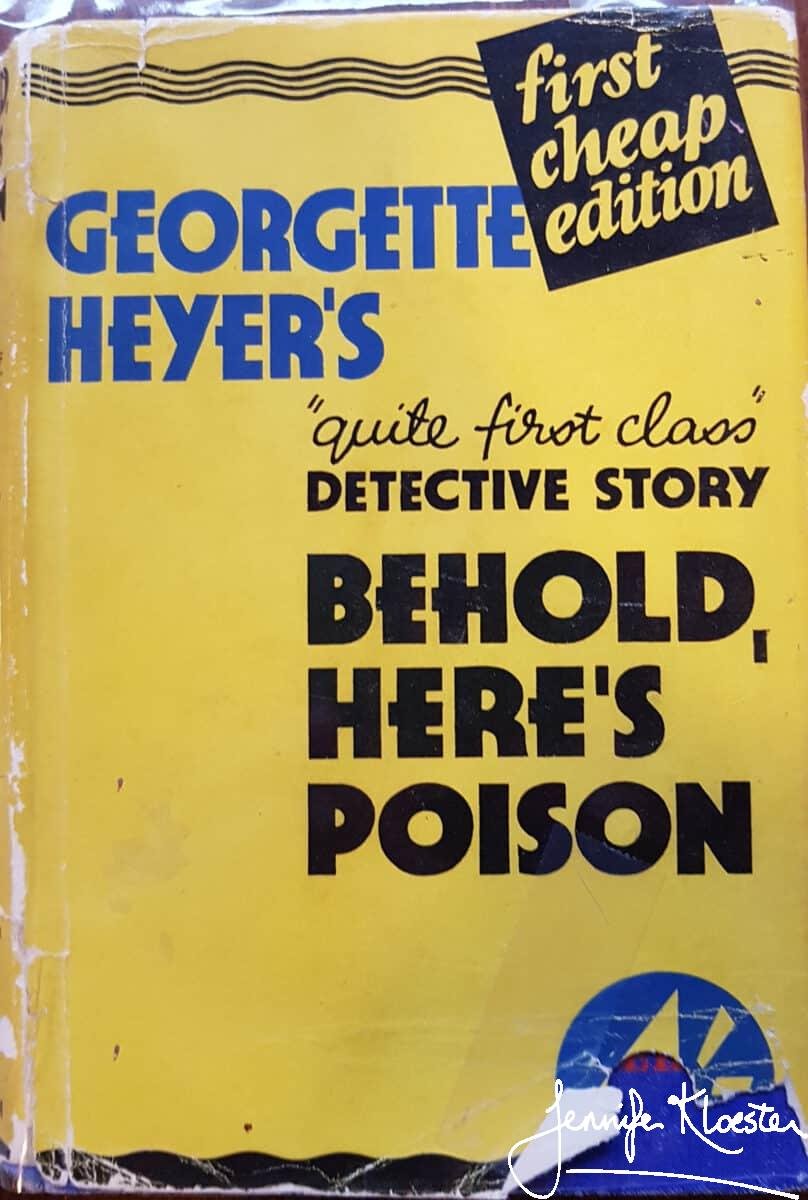
The 1938 edtion 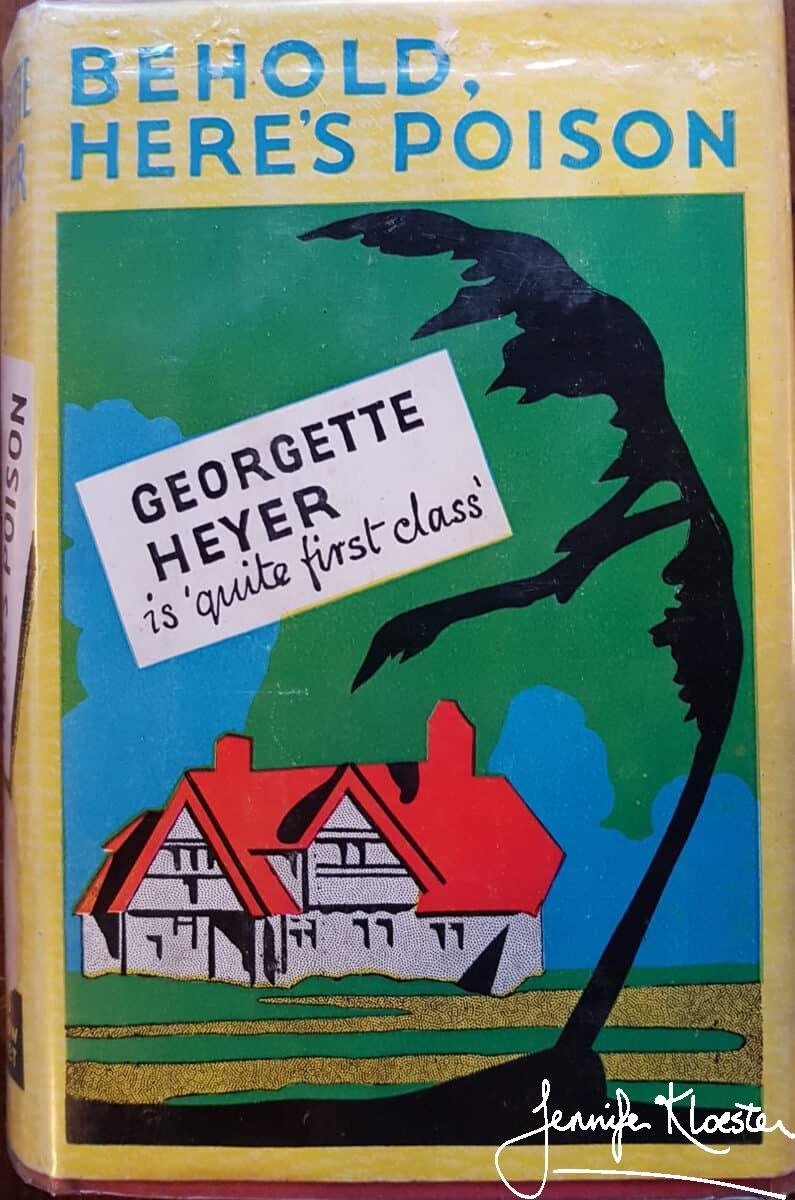
The 1939 edition
“The beauty of the book is its wit”
The body is found on page six and by the butler, who clearly did not do it. This delicious reversal of cliche is only the first of many jokes that Miss Heyer plays in the novel. The victim, Gregory Matthews, was the head of the family but he was not well-liked. His umarried sister, Harriet, who lives with him is parsimonious and self-pitying ond insists on telling anyone who will listen that Gregory ought never to have eaten the duck and that no one can blame her because she ordered cutlets for dinner. Her widowed sister-in-law, Mrs Zoe Matthews, also lives with them and she is one of those who must always be at the centre of atention. Mrs Matthews’ son guy is weak andself-indulgent and it is left to his intelligent sister Stella to try to keep the peace. The setting is a large house on Grinley Heath (which Georgette explained was really Wimbledon) into which come Georgette’s two detectives, Superintendent Hannayside and Sergeant Hemingway. The detectives are both capable and clever, and in this, their second novel, they each expand on their very different approach to detection.
‘my favourite Mrs Heyer for a sparkling novel crystallised around a thread of crime…Mrs Heyer had me guessing in Behold, Here’s Poison. She has such a zest for characterisation that she is hard put to it to deodorise a murderer…anyone who can appreciate a delightful book will take it and like it.
Ralph Partridge, “Detective Dozen”, The New Statesman and Nation, 20 June 1936.

Pan edition (1949) 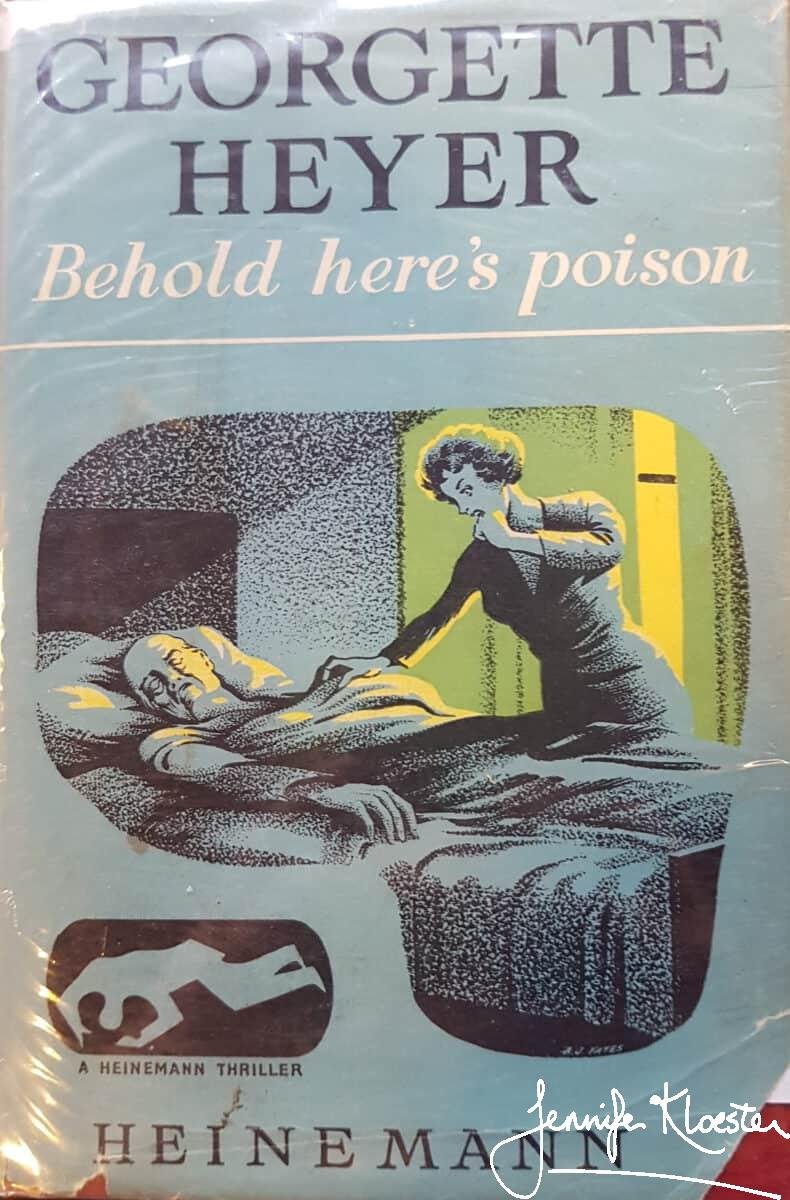
Number 4 in Heinemann’s reissue of Heyer’s detective novels (1954)
“An amiable snake”
But in the end it is Stella’s clever cousin, Randall Matthews, who takes centre stage and who works out who the poisoner is just a little ahead of the police. Randall is one of Heyer’s sardonic yet compelling men. Intolerant of stupidity, a superb dresser, a man of impeccable taste, independently wealthy, he is also “an amiable snake”. At least that’s how Stella describes him. Randall is Gregory Matthews’ heir and appears to have reason enought to kill him, but nothing shakes Randall’s unshakeable demeanour. He is suave, incisive and generally disliked by most of his family – and he is known to reciprocate the feeling. Heyer gave him some marvellous lines and many readers adore him despite – or perhaps because of it. Georgette is writing her way towards a character who would apear in different guises in some of the Regency novels to come.
‘Randall Matthews, “Amiable snake” dominates entire dazzling yarn, which is a marvellous mélange of malice, murder, mystery, and mirth. – Verdict: Priceless!
“The Criminal Record. The Saturday Review’s Guide to Detective Fiction”, The Saturday Review 14, 5 September 1936, p.18.






3 thoughts on “Behold, Here’s Poison – “An ingenious poisoning device””
This is the Heyer mystery I return to most often. Aren’t the 1936 & 39 covers interesting! The solitary house is striking when the proximity of neighbouring houses and how the characters lives intertwine with those of their neighbours is so central to the plot.
I think the use of a street of houses as a setting is something Heyer does very well, arguably better than other Golden Age writers.
Thank you for this excellent post!
That’s a fascinating observation and one I hadn’t considered before. Thanks for posting. I love these early covers and am so glad to have the opportunity to put them out there via these posts. I also love Behold Here’s Poison – probably my favourite Heyer mystery along with Death in the Stocks because of the marvellous characters. Mind you, having said that, I then remember No Wind of Blame and the running joke about “Prince”! I’m delighted you enjoyed the post. The Talisman Ring is next. Best wishes, Jen
Dear Jennifer
Thanks for the history of selection of the name for this detective mystery by Georgette Heyer. Is there still a mystery about ‘On Such a Night’? I gather that Georgette Heyer favoured Shakespearian titles, as with ‘Envious Casca’ (Julius Caesar, Act III Scene 2). I’m glad to hear that Georgette Heyer had a concordance. I used the Internet.
‘On Such a Night’ might come from ‘The Merchant of Venice’ Act V Scene 1. Strictly speaking ‘In such a night . ..’ If so, the clue is of course moonlight. Working title for ‘Death in the Stocks’?
As you’ll gather, I’m an long-time Heyer fan.
Best wishes
Katherine Abetz